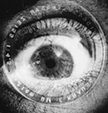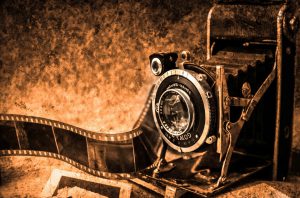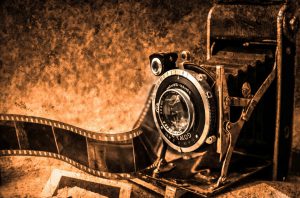
Today, we’re going to talk about using externally licensed stock (or your own reused) footage in your films! (We’ll talk about stock audio another time, but the same principles apply.)
I had mentioned in my first article that the best way to learn about making low-budget films is to look at successful low-budget films. One of the things I learned from watching many, many Roger Corman movies was that shots were often reused in film after film. Sometimes, entire sequences were even reused to save time and money.
I had seen most of these films before as a kid, and because I had not watched them in such close proximity to one another, I had never noticed the reuse of footage. What I did notice was that there was an awesome car explosion. I didn’t care if it was the same car explosion as in another movie I saw a year before. I just knew the car explosion was cool!
And how much did they get away with using stock? They made an entire movie, Hollywood Boulevard (and not a half bad one too for what it is!), about characters going around to different shoots. The film shows them traipsing to each shoot followed by 5 minutes at a time of footage from a different movie for each of those shoots (11 other Corman movies in total!). That is economical!
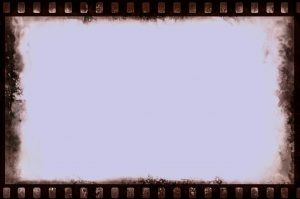
When you’re making a film, your job is to make it the best film it can be given the resources you have.
You have a tiny budget, you probably can’t afford to buy a car, hire an explosives team, hire a fire-department safety unit, pay for insurance for the shot, etc. What you might be able to do, however, is spend a little money licensing a shot that works for your scene. Corman is smart. He owns all of his footage, so he reuses it in his own films, presumably without having to pay any licensing fees.
I would say that an extremely high percentage of indie films use stock.
Reasons to use stock:
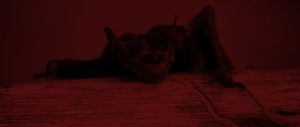
1. Shoot less and save money and time on your production. Stock shots are generally cheaper than setting up a shoot.
2. You can include shots that are otherwise impossible for you to film for logistical reasons.
3. Minimize travel to costly locations. You want establishing shots of an exotic place? Easy.
4. It’s a film standard, even in expensive major Hollywood films!
5. It is quite specifically your responsibility to make the best film you can. No viewer cares about that process. They care about the product. Every aspect of filmmaking is artificial.
6. Stock is always there waiting for you. You suddenly need an unplanned shot or a transition or b-roll shot? Stock.
7. I make stock in addition to using it! In fact, it’s a great potential source of supplemental income / returns on shoots. Here are our stock portfolios: Shutterstock, Pond5, Videoblocks. We’ve sold a bunch of clips, but have no idea where they might have ended up in use!
How to use stock:
1. Search the variety of stock footage sites for a shot that you need (list of sites below). Check frame rate, frame size, and other technical aspects to make sure they will match your footage. You can also plan to convert them to match, but be sure to consider this.
It’s also useful to check to see if the stock is clean enough to match your footage. One modern issue is that there is a lot of stock shot on cheap film that does not match well with ultra-high-definition digital footage.
2. Ideally, shoot footage that matches the stock shots you plan to insert. If you have a beautiful red sunset stock shot, shoot a closeup of your actor bathed in a similar color of sunlight. When you cut from the sun to the closeup, the viewer will easily accept that these are related shots. One famous example includes the purchase of footage of a stunt person holding onto the wing of a biplane as it flies over a canyon. In order to use that as stock, the filmmaker made a model of a biplane wing for closeups and dressed the character the same way as the actor in the stock shot. That way, cuts between the two made it seem like they were really flying over the canyon.
3. Match edit. Make sure your cuts give the feeling that your shots and the stock shots belong together. This can also involve compositing elements.
4. Always carefully check your licenses and rights to see if they meet your project needs!
Where to find stock (paid):
Videoblocks
(7 day free trial): a subscription service offering unlimited use of their library and direct access for discounts to buy footage that is not part of their unlimited library. I subscribe to Videoblocks and use it for nearly every project.
Shutterstock
Pond5
iStockPhoto
Videezy
Bottled Video
Where to find stock (free):
Videvo
Pexels
Archive.org (search for public domain)
Free Animal Video
Vidsplay
Mazwai
Is it really so widely used?
Here is a slideshow of some major film examples.
One of my favorite weird ones:
At 1:23, a watermelon explodes.
Should you be embarrassed by reusing shots? Only if you think Citizen Kane would have been better without pterodactyls in it.
#Sharknado LA and #sharknado2 NY – same scene used in both cities, #arlington police and fire dept stock footage? pic.twitter.com/vRIjFQXYyq
— Farruh Tillaev (@SelektorStyle) August 1, 2014
Some fun:
James Orlowski’s footage in the latest Pee-Wee Herman movie!
Some examples of stock in my own work:
The bird in the opening (recolored, morph cut to remove a section). Notice how I continue the bird’s wing flapping sound into the next shot to give the sense that there is a relation between spaces/locations.
Thirteen (2016) dir. Sophia Cacciola from Launch Over – Cacciola / Epstein on Vimeo.
The stained glass in the beginning, all of the glass breaking at the end (all rotoscoped and recut to fit the needs), and the shot of the Mary statue in the glass (composites and rotoscoping).
The opening shot of the cliffs (a composite of two stock shots, one of ocean and cliffs; the other of a lightning-filled sky), the falling body, and the splash were all separate stock shots. The fog at the end is a stock fog overlay. All of these stock elements were recolored, composited, and scaled for our needs to add or eliminate elements.
And here is a trailer for perhaps our most stock-heavy film. It was very challenging to make a complex sci-fi film for $15,000, so we searched and searched and planned our shoots around the footage available to us as stock. We shot matches for it and cut it in as appropriately as possible. And while we used a lot of stock, we spent a lot of time altering it for our needs.
Stock shots: butterfly (speed changed, was originally day and now completely recolored for night), sun shots that appear on the group of monitors (recorded to VHS and played back through a VCR to the monitors), the brain computer animation (composited onto a computer screen), the warehouse background in the pod scene (overlaid video of characters walking and video of our two pods replicated many times), the fireball in space (recoloring, contrast changes, and rescaling), and the power station during the earthquake (we added the quake, darkened, and recolored). One of the funny things is that if you watch just about any low-budget sci-fi film (films like Europa Report), you are likely to see some of the same shots we’ve used in this film!
Will people notice that I’ve used stock?
Probably not. At least not until you make a post like this revealing that you’ve used stock.
And something for fun – famous scenes recreated using stock:
